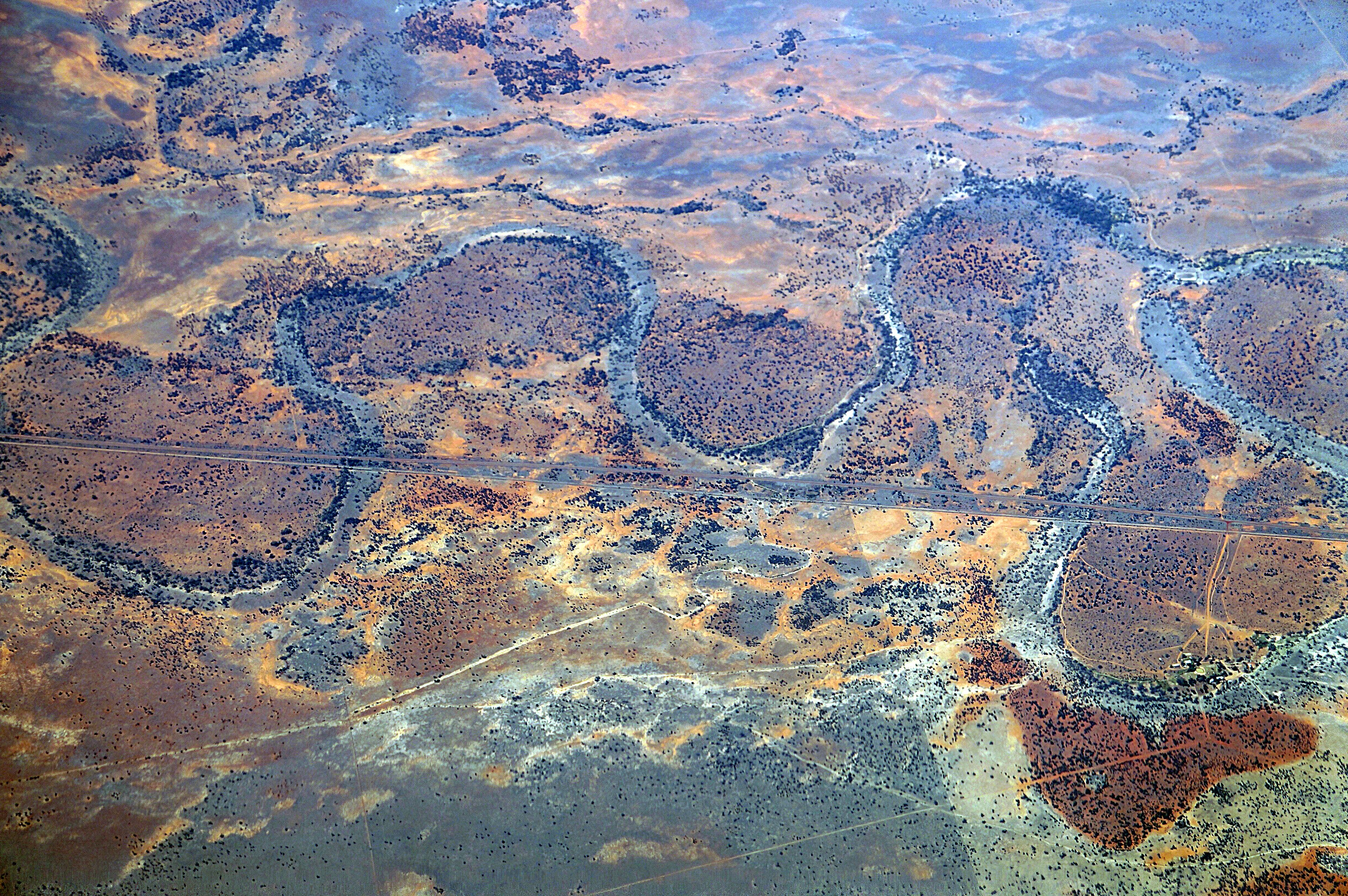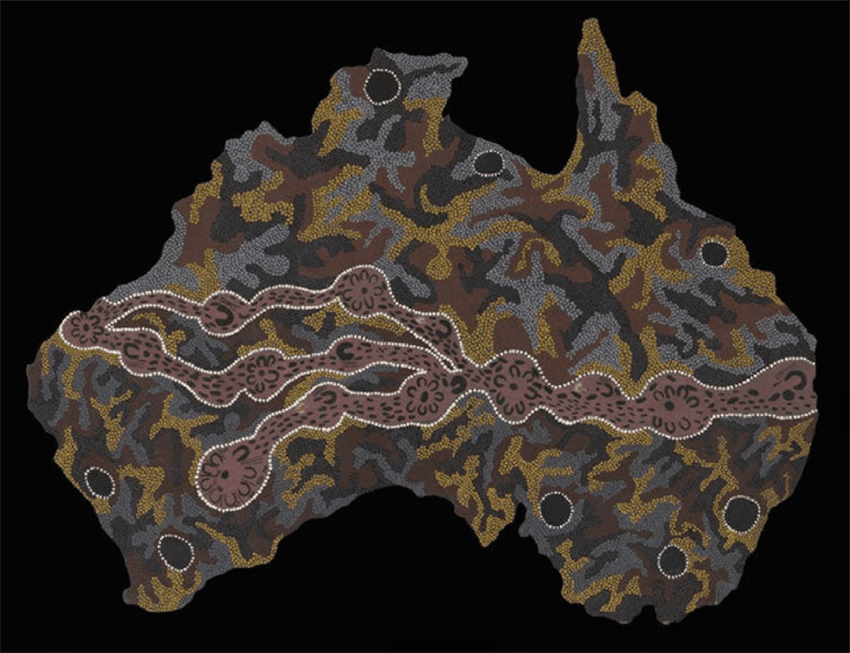Home/Curriculum resources/Reading and navigating through songlines/Activity 3: Songlines as Navigational Guides
Learning Areas:
English, Humanities and Social Sciences, Mathematics, The Arts
Year levels:
Level 3, Level 4

Activity 3: Songlines as Navigational Guides
This activity is a part of the Reading and navigating through songlines resource.
Murray-Darling Basin. Wagga Wagga, Wiradjuri country. Photographer: Mangiwau. Source: Getty Images. Used under licence.

Activity 3: Songlines as Navigational Guides
Focus: This activity deepens students' understanding of songlines as navigational guides and trade routes, highlighting their role in connecting communities, facilitating trade, and marking significant cultural and natural landmarks.
Possible overarching question: How do songlines help us understand the connection between land, culture, and communication in Aboriginal and Torres Strait Islander cultures?
Step by step guide
Step 1: Connecting to students' prior learning
Step 2: Exploring navigational aspects of songlines through class discussion
Step 3: Deepening understanding of navigational aspects of songlines through case studies
Step 4: Anchor chart reflection
Required Resources:
Teacher Support Material
Songlines Quote
Image from the Seven Sisters Exhibition at the National Gallery of Australia
Case study student materials

Step 1: Connecting to students' prior learning
Start with a review of key insights from the last activity "Introduction to songlines" using the anchor chart. Focus on the understanding that songlines encompass various modes of communication like storytelling, music, art, and dance, and are tangible pathways across the land, connecting communities and marking significant environmental features.
The following quote from Songlines: First Knowledges for younger readers by Margo Neal (Gumbaynggir, Kulin and Wiradjuri) and Lynne Kelly could be used as a stimulus for this discussion.
“You can think of Songlines as a bit like a map, or track that guides you across the land. But they are a great deal more than that. They are our GPS, our school textbooks and our creation stories. In fact, they are all our libraries rolled into one.”
(Songlines: First Knowledges for younger readers, p. 2)
Step 2: Exploring navigational aspects of songlines Discussion
Note: Please see Teacher Support Material for guidance facilitating this discussion.
Let students know that we are going to focus on the navigational aspect of songlines. You could ask what parts of the quote relate to navigation. E.g. map, track, guide, GPS.
Lead a class discussion using the image from the Seven Sisters Exhibition at the National Gallery of Australia. The Teacher Support Material provides possible questions and some expected responses. Focus on the navigational aspects of songlines and how they are used for trading, locating materials for tools, searching for seasonal foods, facilitating social interactions, and finding reliable sources of water.

Figure 1: Seven Sisters Songline 1994 by Josephine Mick, Ninuku Arts. © the artist/Licensed by Viscopy. Photo: National Museum of Australia (2017).
Let students know that songlines are also important for trade, ceremonies, social interactions and to find food, water and shelter. Spend time unpacking any of these terms that are unfamiliar to students.
Step 3: Deepening understanding of navigational aspects of songlines through Case Studies
Case Studies:
Case Study 1: Bunya Nut Festival (Queensland; Navigating for Ceremony and Social Interaction)
Case Study 2: The Lake Bolac stone arrangement (Victoria; Navigating for Ceremony and Social Interaction)
Case Study 3: Dampier Rock Art Precinct (Western Australia; Navigating to Significant Site)
Case Study 4: The Wurrwurrwuy Makassan Stone Pictures (Northern Territory; Navigating for Trade)
Case Study 5: Scar tree at Heide Yingabeal (Victoria; Markers to support navigation)
A suite of multimodal student resources on the following five case studies has been provided to support this activity. You can choose the best way to engage students with these resources. Below are some suggested methods.
Ideas for Exploring Case Studies:
Jigsaw Groupings: Students are divided into groups, each becoming experts on one case study. They then regroup to share their findings with peers, ensuring all students learn about each case study.
Case Study Discussion Circles: Similar to Jigsaw Groupings. Each group learns about one case study then shares their findings with the whole class. This method is ideal if students need more support and scaffolding in comparison to the Jigsaw Groupings.
Individual Research: Students select a case study to research and decide how to present their findings (e.g., report, poster, PowerPoint).
Case Study Mind Map: Students present their knowledge through a mind map, allowing for connections and comparisons between case studies.
Class Map Display: Students create a map showing the location of each case study, either individually, in small groups, or as a whole class.
Step 4: Anchor chart reflection
Revisit anchor chart and add any new thinking about songlines as navigational guides.

Related activities within this resources:

Activity 1: Modes of Communication
This activity aims to help students explore and understand various modes of communication and their purpose. Through a Gallery Walk, investigation, and reflection, students will examine different communication modes. They will identify how these modes are used to share knowledge, navigate, and help people. By unpacking maps and pathways, students will develop a foundational understanding of communication's role and how songlines function as pathways across the land.

Activity 2: Introduction to songlines
This activity builds on Activity 1, where students explored various modes of communication. Now, students will be introduced to songlines, a complex and integral part of Aboriginal and Torres Strait Islander cultures. Through engaging in exploration stations, and reflecting on their learning, students will explore the mode, purpose, and significance of songlines. This activity will help students start to understand how songlines connect land, culture, and communication.

Activity 4 (Part one of three): Creating a Map/Pathway
This activity has three distinct parts. In this part of the activity, students are asked to connect their understanding of maps and mapping by creating their own personal map of a familiar space, noting key landmarks and features.

Activity 4 (Part two of three): Learning about techniques of orality and memory
Building on the skills and insights gained in part one, where students created personal maps and identified key landmarks, this activity introduces the integration of orality and memory techniques. Students will explore how stories, histories, and knowledge are conveyed through spoken word, songs, and other oral expressions.

Activity 4 (Part three of three): Applying techniques of orality and memory to map/pathway
In this final part of Activity 4, students will bring together their map/pathways from part one and the orality and memory techniques learned in part two. They will create and share oral narratives that guide someone through their map/pathway, using techniques such as song, movement, rhyme, humour, and descriptive language. This activity serves as a culminating learning experience, drawing together the sequence of learning and allowing students to apply their knowledge and skills in a meaningful way.

Supporting Reading Material
Find two student texts about songlines and supporting reading response templates.